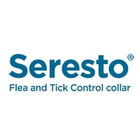
Just like humans, dogs need to maintain a healthy weight to live a long, active, and happy life. Extra weight can lead to serious health problems such as diabetes, joint pain, heart disease, and reduced life expectancy. On the other hand, being underweight can signal nutritional deficiencies or underlying health issues.
In this article, we’ll guide you through how to determine if your dog is at a healthy weight, what causes weight changes, and how you can help your furry friend maintain the right balance.
Why Maintaining a Healthy Weight Matters
Keeping your dog at an ideal weight is one of the best things you can do for their overall health. Overweight dogs are more likely to develop:
- Arthritis and joint pain – Excess weight puts additional stress on bones and joints.
- Heart and respiratory problems – Fat buildup affects heart function and breathing.
- Diabetes – Obesity increases insulin resistance, which can lead to diabetes.
- Liver disease – The liver struggles to process fat efficiently when overloaded.
- Reduced lifespan – Studies show that overweight dogs can live up to two years less than dogs at a healthy weight.
Maintaining a proper weight helps improve energy levels, mobility, and your dog’s quality of life — keeping them playful and happy for years to come.
How to Tell If Your Dog Is Overweight or Underweight
You don’t always need a scale to notice weight changes in your dog — observation and touch can tell you a lot. Here are some quick checks:
- Ribs test: You should be able to feel your dog’s ribs easily, but not see them prominently. If the ribs are hidden under thick fat, your dog may be overweight. If the ribs are too visible, your dog might be underweight.
- Waistline: When looking from above, your dog should have a visible waist that narrows between the ribs and hips.
- Side view: From the side, there should be a noticeable “tuck-up” behind the ribs.
- Behavior: Overweight dogs may tire easily, pant frequently, or struggle to climb stairs, while underweight dogs may appear weak, lethargic, or have dull fur.
Your vet can also use a Body Condition Score (BCS) — a 1–9 scale where 4–5 represents a healthy range.
Common Causes of Weight Gain in Dogs
Several factors can contribute to weight gain in dogs:
- Overfeeding: Feeding too many treats or table scraps adds unnecessary calories.
- Lack of exercise: Sedentary dogs burn fewer calories, leading to fat accumulation.
- Age: Older dogs have a slower metabolism and may gain weight even with the same diet.
- Spaying or neutering: Hormonal changes can cause a slight reduction in metabolism, requiring adjustments to the diet.
- Medical issues: Conditions like hypothyroidism or Cushing’s disease can lead to weight gain.
If you notice a sudden increase in your dog’s weight, consult your vet to rule out any medical causes.
Common Causes of Weight Loss in Dogs
Unexplained weight loss can be just as concerning as weight gain. It might be caused by:
- Poor diet or low-quality dog food
- Dental problems that make chewing difficult
- Parasite infections (worms, fleas, etc.)
- Chronic diseases like kidney or liver issues
- Stress, anxiety, or depression
Your vet may recommend diagnostic tests, such as blood work or stool analysis, to identify the cause.
How to Help Your Dog Achieve and Maintain a Healthy Weight
Here are some practical and effective tips to keep your dog in shape:
Feed the Right Amount
Follow the feeding guidelines on your dog’s food packaging, but remember that activity level, age, and breed can affect calorie needs. Your vet can help you to find out the right portion size.
Choose High-Quality Dog Food
Opt for balanced dog food rich in protein, fiber, and essential nutrients. Avoid foods with fillers, such as corn syrup or excessive carbohydrates.
Look for veterinarian-approved brands or prescription diets if your dog needs weight management.
Establish a Feeding Routine
Feed your dog at the exact times every day. Avoid leaving food out all the time (free feeding), as it can lead to overeating.
Limit Treats
Treats should make up no more than 10% of your dog’s daily calories. Choose low-calorie treats or use fruits and vegetables like carrots or apples (in moderation).
Increase Exercise Gradually
Daily walks, play sessions, swimming, or fetch games are excellent ways to burn calories. Start slowly if your dog isn’t accustomed to regular exercise, and gradually increase the duration over time.
Monitor Weight Regularly
Weigh your dog every 2–4 weeks and keep a record of its progress. Even small changes matter — losing 1–2% of body weight per week is a safe target for overweight dogs.
Encourage Mental Stimulation
Use puzzle toys, training activities, or hide-and-seek games to keep your dog active and engaged, which helps burn extra energy.
Consult Your Veterinarian
Always work with your vet to design a safe weight-loss or weight-gain plan. Sudden changes in diet or activity can be harmful.
Healthy Weight by Breed and Size
Each breed has a different ideal weight range. For example:
- Small breeds (e.g., Chihuahua, Pomeranian): 3–7 lbs (1.5–3.2 kg)
- Medium breeds (e.g., Beagle, Cocker Spaniel): 20–35 lbs (9–16 kg)
- Large breeds (e.g., Labrador, German Shepherd): 55–90 lbs (25–40 kg)
- Giant breeds (e.g., Great Dane, Mastiff): 100+ lbs (45+ kg)
However, the condition of your dog is more important than the number on the scale. Focus on body shape and overall health rather than weight alone.
Long-Term Benefits of a Healthy Weight
Maintaining your dog’s ideal weight offers numerous long-term benefits:
- Stronger bones and joints
- Better heart and lung function
- More energy for play and walks
- Shinier coat and improved skin health
- Fewer vet visits and lower medical expenses
- Longer, happier life with you
Final Thoughts
A healthy weight isn’t just about appearance — it’s about giving your dog the best possible life.
By providing nutritious meals, ensuring daily exercise, managing portion sizes, and scheduling regular veterinary check-ups, you can keep your dog strong, energetic, and healthy.
Always remember — a fit dog is a joyful dog, and the care you give today will reward you with many happy years together.






